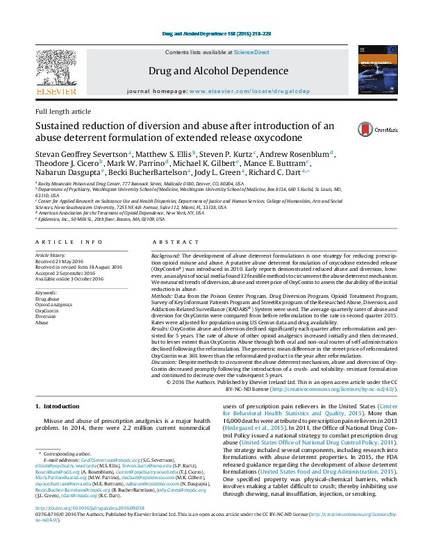
Background: The development of abuse deterrent formulations is one strategy for reducing prescription opioid misuse and abuse. A putative abuse deterrent formulation of oxycodone extended release (OxyContin®) was introduced in 2010. Early reports demonstrated reduced abuse and diversion, however, an analysis of social media found 32 feasible methods to circumventthe abuse deterrent mechanism. We measured trends of diversion, abuse and street price of OxyContin to assess the durability ofthe initial reduction in abuse. Methods: Data from the Poison Center Program, Drug Diversion Program, Opioid Treatment Program, Survey of Key Informant Patients Program and StreetRx program of the Researched Abuse, Diversion, and Addiction-Related Surveillance (RADARS®) System were used. The average quarterly rates of abuse and diversion for OxyContin were compared from before reformulation to the rate in second quarter 2015. Rates were adjusted for population using US Census data and drug availability. Results: OxyContin abuse and diversion declined significantly each quarter after reformulation and persisted for 5 years. The rate of abuse of other opioid analgesics increased initially and then decreased, but to lesser extent than OxyContin. Abuse through both oral and non-oral routes of self-administration declined following the reformulation. The geometric mean difference in the street price of reformulated OxyContin was 36% lower than the reformulated product in the year after reformulation. Discussion: Despite methods to circumvent the abuse deterrent mechanism, abuse and diversion of OxyContin decreased promptly following the introduction of a crush- and solubility- resistant formulation and continued to decrease over the subsequent 5 years.
Available at: http://works.bepress.com/mance-buttram/68/
